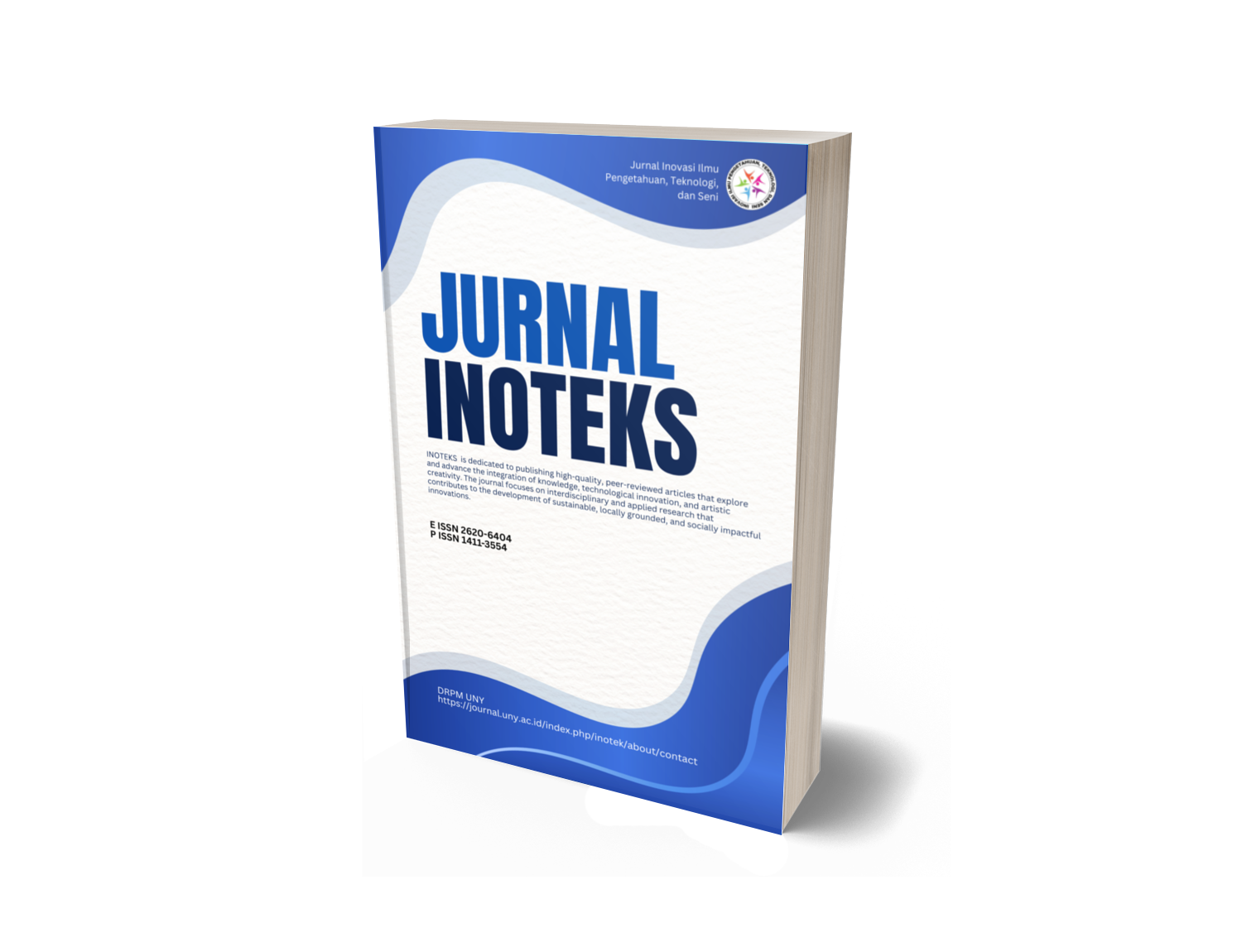Uji impak mesin heated die screw extruder pada pembriketan limbah pertanian
DOI:
https://doi.org/10.21831/ino.v22i2.12337Keywords:
briket, limbah pertanian, ekstruder ulirAbstract
Limbah pertanian (sekam padi, jerami padi, tongkol jagung, kulit singkong, rumput, dll) diproduksi dalam jumlah besar di Indonesia. Limbah pertanian dapat diubah menjadi bentuk energi melalui proses konversi termo mekanik. Proses pembuatan briket adalah pengubahan limbah pertanian menjadi briket berbentuk seragam yang mudah digunakan, diangkut, dan disimpan. Tujuan dari penelitian ini adalah untuk menentukan suhu dan kecepatan poros ekstruder ulir die berpemanas untuk pembriketan limbah pertanian. Sampel briket dibriket pada suhu 200, 300, 400o C dan kecepatan poros 30, 50, 100 rpm. Uji impak dilakukan untuk mendapatkan temperatur dan kecepatan poros yang sesuai untuk pembuatan briket limbah pertanian. Uji impak dilakukan dengan menjatuhkan sampel briket dari ketinggian 2 m ke lantai beton. Hasil pengujian menunjukkan bahwa temperatur briket dan kecepatan poros yang baik adalah 300o C dan 50 rpm.
The impact test of heated die screw extruder on agricultural waste briquetting
Agricultural wastes (rice husk, rice straw, corncob, cassava peel, grass, etc.) are produced in considerable quantities in Indonesia. Agricultural waste can be converted to a form of energy through the thermomechanical conversion process. The briquetting process is converting agricultural waste into uniformly shaped briquettes that are easy to use, transport and store. The present study aims to determine the temperature and the shaft speed of heated die screw extruder for briquetting agricultural wastes. Briquette samples were briquetted at the temperature of 200 o, 300 o, 400o C and shaft speeds of 30, 50, and 100 rpm. An impact test was conducted to obtain the temperature and shaft speed suitable for briquetting of agricultural wastes. The impact test was carried out by dropping a briquette sample from 2 m onto a concrete floor. The test results show an excellent briquetting temperature and shaft speeds are 300o C and 50 rpm.
References
Agbontalor, E. A. (2007). Overview of Various Biomass Energy Conversion Routes. American-Eurasian Journal of Agric. and Environ Science, 2(6), 662-667.
Agbro, E. B., & Ogie, N. A. (2012). A comprehensive review of biomass resources and bio-fuel production potential in Nigeria. Research Journal in Engineering and Applied Sciences 1(3), 149-155.
Budiana, E. P, Himawanto, D. A., Tjahajana, D. D. D. P., & Widodo, J. P. (2014). Rekayasa Heated Die Screw Extruder untuk Pembuatan Binderless Biobriquette, Simposium Nasional RAPI XIII - 2014 FT UMS.
Ki, O. L., Kurniawan, A., Lin, C. X., Ju, Y. H., & Ismadji, S. (2012). Bio-oil from Cassava Peel: Potential Renewable Energy Source. International Conference on Industrial Bioprocesses.
Saputro, D. W., Widayat, W., Rusiyanto, Saptoadi, H., & Fauzun. (2012). Karakterisasi Briket Dari Limbah Pengolahan Kayu Sengon Dengan Metode Cetak Panas. Seminar Nasional Aplikasi Sains & Teknologi (SNAST) Periode III, ISSN: 1979-911X, A394-A400.
Shinde V. B., & Singarvelu, M. (2014). Thermo Gravimetric Analysis of Biomass Stalks for Briquetting. Journal of Environmental Research and Development, 9(1), 151-160.
Downloads
Published
How to Cite
Issue
Section
Citation Check
License
- Authors certify that the work reported here has not been published before and contains no materials the publication of which would violate any copyright or other personal or proprietary right of any person or entity.
- Authors transfer or license the copyright of publishing to Jurnal Civics: Media Kajian Kewarganegaraan to publish the article in any media format, to share, to disseminate, to index, and to maximize the impact of the article in any databases.
- Authors hereby agree to transfer a copyright for publishing to Jurnal Civics: Media Kajian Kewarganegaraanas a Publisher of the manuscript.
- Authors reserve the following:
- all proprietary rights other than copyright such as patent rights;
- the right to use all or part of this article in future works of our own such as in books and lectures;
- use for presentation in a meeting or conference and distributing copies to attendees;
- use for internal training by author's company;
- distribution to colleagues for their research use;
- use in a subsequent compilation of the author's works;
- inclusion in a thesis or dissertation;
- reuse of portions or extracts from the article in other works (with full acknowledgement of final article);
- preparation of derivative works (other than commercial purposes) (with full acknowledgement of final article); and
- voluntary posting on open web sites operated by author or author's institution for scholarly purposes, but it should follow the open access license of Creative Common CC BY-NC-SA License.









